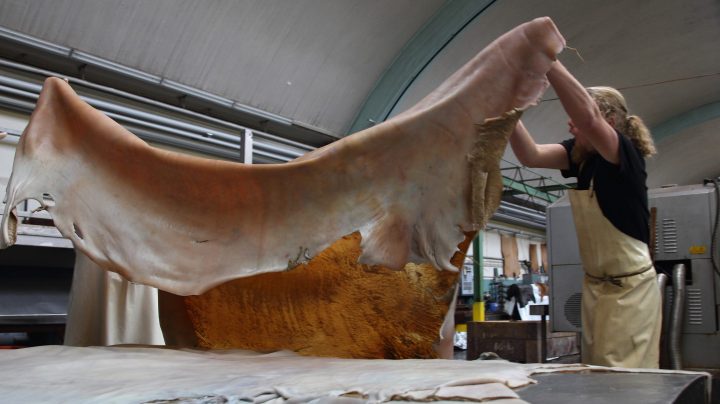
How hides, tallow and rosin can help us understand where the economy is headed
How hides, tallow and rosin can help us understand where the economy is headed

Here’s a riddle: What do a violin shop owner, a beef tallow candlemaker and a scrap metal trader have in common? Answer: Their livelihoods depend on components of the Commodity Research Bureau raw industrials spot price index. It may sound weedy and dry, but the raw industrials index is relevant to all kinds of businesses and can help predict macroeconomic trends.
The index dates back to 1934, when, in the wake of the Great Depression, the U.S. government got more involved in tracking economic data.
“The Department of Labor started to track various inputs that sort of could theoretically control or influence the economy,” said Eero Pikat, president of Barchart, a financial information provider. “And so a series of indexes were created, including the raw industrials index.”
The composition and ownership of those indexes have changed over time. Today, the raw industrials index is published by Barchart and includes the following 13 items:
- Hides
- Tallow
- Copper scrap, lead scrap, steel scrap, zinc and tin
- Burlap
- Cotton, print cloth and wool tops
- Rosin
- Rubber
“These are crucial to the core parts of industries,” Pikat said.
That’s where those small businesses come in. “We make soaps, we make candles, we make salves, balms, creams, lotions, everything that you can imagine that you can apply on your skin,” said Sonia Vasquez, owner of a small company called Latina Natural in southeast Wisconsin. “All of them are made with grass-fed beef tallow.”
Leather hide offers another example. “There [are] a lot of food products, like, for instance, wine, that is actually filtered through hides,” Pikat said.
Rosin, another product in the raw industrials index, has all kinds of uses, including printing ink, pharmaceuticals, adhesives, chewing gum and even classical music. “We in the trade use it on bows,” said Cy Amesquita, a violin store owner in Omaha, Nebraska. “The rosin is put on the horsehair so that it can actually grab the string and create the sounds that you hear.”

Though some of these uses might seem niche or obscure, the shifting prices of raw industrial commodities can shed light on the economy as a whole. “It’s essentially a predictor of some of the macroeconomic trends that happen three [or] six months down the line,” said Eero Pikat at Barchart.
“It’s one of my favorite indicators,” said Edward Yardeni, chief economist and investment strategist at Yardeni Research. “I can watch it on a daily basis and it gives me some feedback on what’s going on in the U.S., in the global economy.”
Yardeni said one asset of the group is its focus on manufacturing inputs, rather than volatile commodities like energy. “It’s always been the case that manufacturing is more cyclical than services,” he said. “They have a supply and demand characteristic that’s clearly very much driven by the booms and busts in the global economy.”
There are also no futures markets for most of the components, making them less susceptible to the influence of market speculation. “They really do reflect underlying demand, supply and demand,” Yardeni said.
The raw industrials index has dropped almost 20% since the Federal Reserve began raising interest rates last year. “More recently, it’s firmed up, which is one of the reasons that I didn’t believe that we were going to go into a recession,” Yardeni said.
The fact that the price trend has flattened, Pikat added, shows that “the last one or two interest rate hikes haven’t really had the same deflationary impact as perhaps the Fed would have [hoped].”
There’s a lot happening in the world. Through it all, Marketplace is here for you.
You rely on Marketplace to break down the world’s events and tell you how it affects you in a fact-based, approachable way. We rely on your financial support to keep making that possible.
Your donation today powers the independent journalism that you rely on. For just $5/month, you can help sustain Marketplace so we can keep reporting on the things that matter to you.











